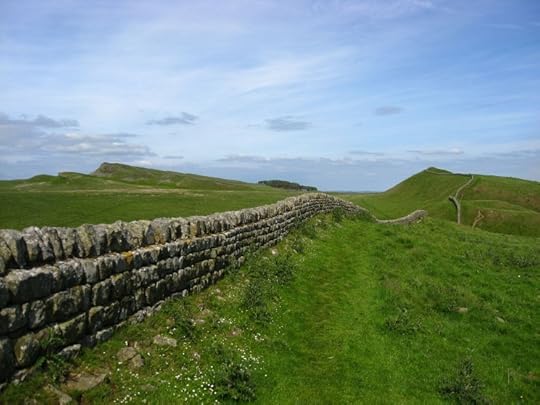Our habitat: threshold
One does not have to be a specialist to suggest that threshold is either a disguised compound or that it contains a root and some impenetrable suffix. Disguised compounds are words like bridal (originally, bride + ale but now not even a noun as in the past, because -al was taken for the suffix of an adjective) or barn, a blend of the words for “barley,” of which only b is extant, and Old Engl. earn “house.” I cited æren ~ earn in the post on house. Nor is it immediately clear whether we are dealing with thresh-old or thresh-hold. Some of our earlier etymologists (among them Junius, 1743, in a posthumous edition of his dictionary, and Mahn, the 1864 editor of etymologies in Webster) thought that threshold was indeed thresh + hold. They were wrong. An attempt to identify -shold with sill is a solution born of etymological despair. This Germanic word for “threshold” was opaque as far back as the time of the oldest written monuments. For some reason, Latin limen and Russian porog (stress on the second syllable), both meaning “threshold,” also lack a definitive etymology.
The attested forms are many. Old English had þrescold, þerxold, and even þrexwold (þ = th), which shows that the word’s inner form made little sense to the speakers. Thus, -wold meant, as it more or less still does, “forest.” Hence the persistent belief that the threshold is a board or a plank on which one thrashed. This interpretation survived the first edition of Skeat’s dictionary (about which more will be said below) and surfaced in numerous books derivative of it. But wold never meant “wood, timber.”
Swedish tröskel and Norwegian terskel go back to Old Norse þresk(j)öldr, which, like its Old English congener, underwent several changes under the influence of folk etymology; the second element was associated with the Old Norse word “shield.” The fact that the threshold has nothing to do with shields did not bother anyone; folk etymology gets its nourishment from outward similarity and ignores logic. Old High German driscubli ~ driscufli live on only in dialects. The Standard Modern German word for “threshold” is Schwelle, a cognate of Engl. sill, as, among others, in windowsill.
 On the threshold.
On the threshold. The Scandinavian forms look like the English ones, but those of the Low (= northern) German-Dutch-Frisian area bear almost no resemblance to them. Modern Dutch has drempel and dorpel. The suffix -el causes no problems. The fact that in drempel r precedes the vowel, while in dorpel r follows it, can be explained away as a typical case of metathesis (see Old Engl. þrescold and þerxold, above). An extra m in drempel need not embarrass us either, for such nasalized forms are plentiful. Thus, Engl. find may be allied to Latin petere “to seek,” and if it is not, there are dozens of other examples. Consider stand—stood; though, when one word requires so much special pleading, some feeling of unease cannot be avoided. The English noun makes us think of thrash and its doublet thresh, while Dutch drempel seems to be cognate with Engl. trample. Now the threshold comes out as that part of the floor on which we tread, rather than thrash, though neither trample nor especially thresh ~ thrash are close synonyms of tread. In making this argument, Germans often glossed threshold as Trittholz (Tritt “step,” Holz “wood”).
Jacob Grimm, who sometimes made mistakes but never said anything that failed to provoke and enrich thought, believed that threshold designated the part of the house in which corn was threshed or stamped upon (stamping constituted the primitive system of threshing) and had some following, but Charles P. G. Scot, the etymologist for The Century Dictionary, noted that “the threshing could not have been accomplished on the narrow sills which form thresholds, and it was only in comparatively few houses that threshing was done at all.” Some time later Rudolf Meringer, who devoted much energy to researching people’s material culture in the German and Slavic-speaking areas, said the same. He pointed out that, as a general rule, the oldest Germanic threshing floors were situated outside living houses and that the only exceptions could be found in Lower Saxony.
Not without some reluctance we should accept the conclusion that in the remote past the threshold denoted an area next to the living quarters, rather than what we today understand by this word, assuming of course that thresh- in threshold is identical with thresh ~ thrash. However, this assumption seems inevitable. The verb in question could perhaps at some time mean “rub,” as shown by the possible cognates of thrash ~ thresh in Latin (terere) and Russian (teret’; stress on the second syllable), not “beat repeatedly and violently.” Yet this nicety will only obscure the picture, for the threshold was not a board people’s feet “rubbed.”
We should now turn our attention to -old. The OED, in an entry published in 1912, cautiously identified thresh- with the corresponding verb and called the residue of threshold (that is, -old) doubtful. The much later Oxford Dictionary of English Etymology shifted accents somewhat: the first element is said to go back to Old Engl. þerscan, retained as Modern English thrash in the primitive sense of “tread, trample,” while the second element is called not identifiable, which sounds more ominous than “doubtful.” (The entry has yet to be revised as part of OED‘s current comprehensive revision.) In my opinion, the situation with the second element is not so hopeless.
The famous German linguist Eduard Sievers isolated the ancient suffix -ðlo (ð = th in Modern Engl. the). Its existence cannot be put into question, and it is still almost discernible in words like needle. Sievers reconstructed the etymon of threshold as þersc-o-ðl(o). Old High German drisc-u-bli (see it above) looks almost like his etymon. In that form, ðl changed to dl and allegedly underwent metathesis: dl to ld (a common process: even needle has been recorded in the form neelde); hence threshold. Skeat must have read the article suggesting this reconstruction too late (it is not for nothing that the Germans sometimes accused him of not following their publications!), but, once he became familiar with it, he accepted Sievers’s reconstruction with undisguised enthusiasm. Although he usually reported new findings in his Concise Dictionary, strangely, for many years the old derivation remained the same in the subsequent editions of the smaller book, despite the fact that in his ambitious work Principles of English Etymology (1887) the new solution was presented as self-evident. Surprisingly, the last Concise published in his lifetime appeared in two versions. In one, Sievers is only mentioned; in the other, the reference to the volume and page is given, exactly as in a note published many years earlier. This shows that even an accurate reference can be misleading and lead critics astray.
 The line shows the border of the territory to which the Romans laid claim. It was called limes, that is, “threshold.” Engl. limen, limit, and subliminal have the root of limes.
The line shows the border of the territory to which the Romans laid claim. It was called limes, that is, “threshold.” Engl. limen, limit, and subliminal have the root of limes. I don’t know the reason for the OED’s caution (in 1912), seeing that Sievers’s article appeared in 1878 and that Skeat first defended it in print in 1885. Some dictionaries follow Sievers, but isolate the suffix -wold in threshold. One of the Old English forms did end in -wold, but, as noted, it must have been the product of folk etymology. Scandinavian scholars are especially prone to favoring this suffix because the Old Norse for thrash ~ thresh was þryskva, but þryskva can be dismissed as a doublet of þreskja. Besides, once we allow w in the suffix to take a permanent place, there is no way of getting rid of it in other forms.
Thus, threshold is less troublesome than our reference books sometimes make it out to be. At one time, it appears, the threshold was not part of a doorway. The word’s original form became obscure quite early and produced a whole bouquet of folk etymological doublets. Old High German driscubli stands especially close to the sought-after etymon. Most probably, the threshold was a place where corn was threshed (a threshing floor). The word contained a root and a suffix. That suffix has undergone numerous changes, for people tried to identify it with some word that could make sense to them. What remains unclear is not this process but the semantic leap. We are missing the moment at which the threshing floor, however primitive, began to denote the entrance to the room.
Image credits: (1) ‘Dweller on the Threshold’ by Arthur Bowen Davies, circa 1915. Public domain via Wikimedia Commons. (2) Hadrian’s Wall. Photo by Glen Bowman. CC BY 2.0 via Flickr.
The post Our habitat: threshold appeared first on OUPblog.









 Related StoriesOur habitat: one more etymology brought “home”Monthly gleanings for January 2015Our habitat: house
Related StoriesOur habitat: one more etymology brought “home”Monthly gleanings for January 2015Our habitat: house
Oxford University Press's Blog
- Oxford University Press's profile
- 238 followers



